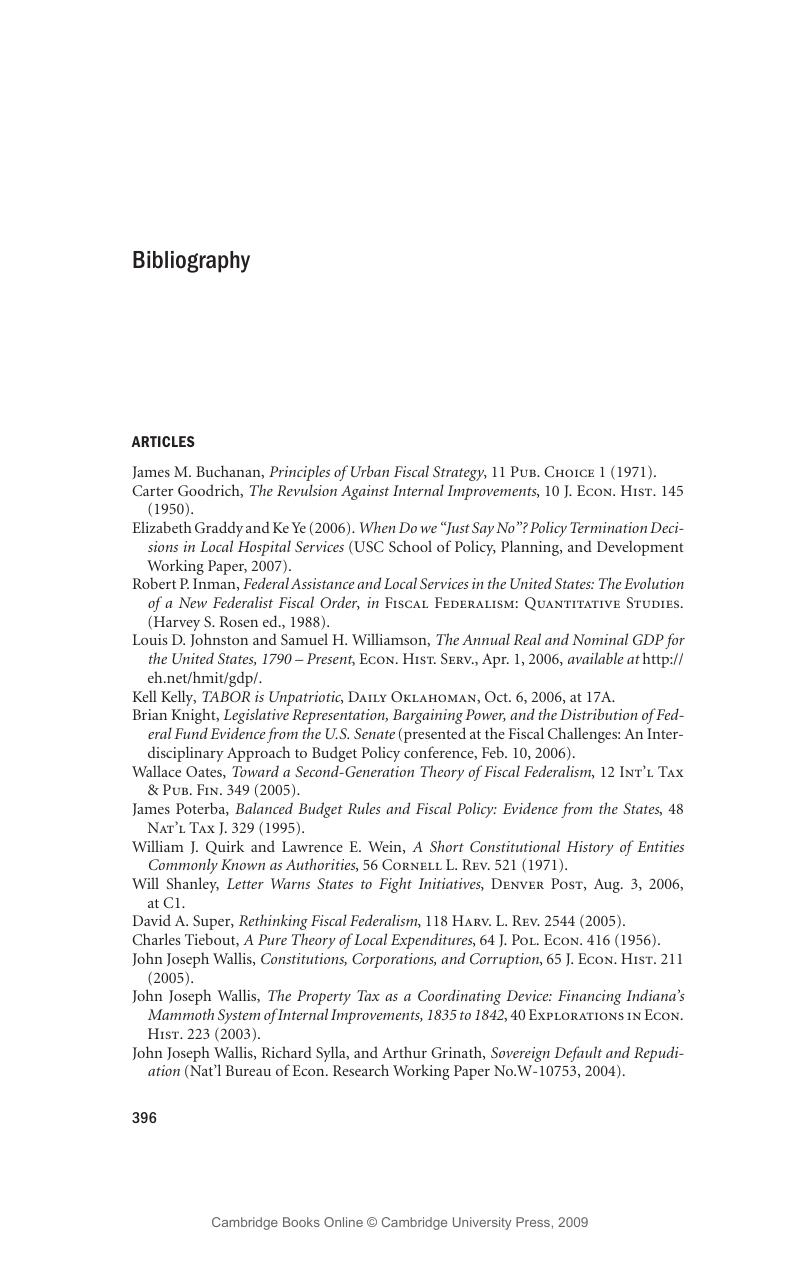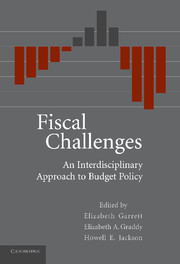Book contents
- Frontmatter
- Contents
- Preface
- Contributors
- PART ONE THE LAW AND POLITICS OF FISCAL POLICY
- PART TWO UNDERSTANDING FEDERAL DEFICITS AND PUBLIC DEBT
- PART THREE BUDGETING AND FISCAL CONSTRAINTS AT THE STATE LEVEL
- PART FOUR INTERGOVERNMENTAL ASPECTS OF BUDGET POLICY
- 11 Dysfunctional or Optimal Institutions? State Debt Limitations, the Structure of State and Local Governments, and the Finance of American Infrastructure
- 12 Federal–State Budgetary Interactions
- Part Four Bibliography
- PART FIVE JUDICIAL POWERS AND BUDGET POLICY
- Index
- References
Part Four Bibliography
Published online by Cambridge University Press: 23 December 2009
- Frontmatter
- Contents
- Preface
- Contributors
- PART ONE THE LAW AND POLITICS OF FISCAL POLICY
- PART TWO UNDERSTANDING FEDERAL DEFICITS AND PUBLIC DEBT
- PART THREE BUDGETING AND FISCAL CONSTRAINTS AT THE STATE LEVEL
- PART FOUR INTERGOVERNMENTAL ASPECTS OF BUDGET POLICY
- 11 Dysfunctional or Optimal Institutions? State Debt Limitations, the Structure of State and Local Governments, and the Finance of American Infrastructure
- 12 Federal–State Budgetary Interactions
- Part Four Bibliography
- PART FIVE JUDICIAL POWERS AND BUDGET POLICY
- Index
- References
Summary

- Type
- Chapter
- Information
- Fiscal ChallengesAn Interdisciplinary Approach to Budget Policy, pp. 396 - 398Publisher: Cambridge University PressPrint publication year: 2008



